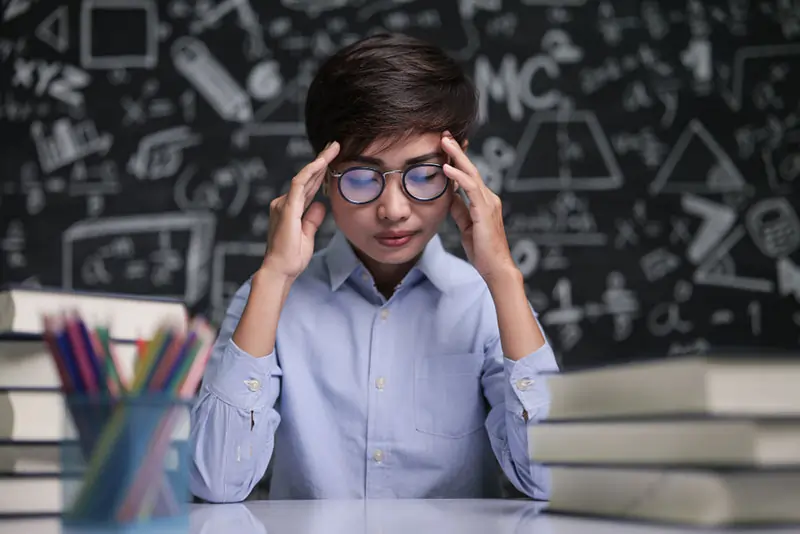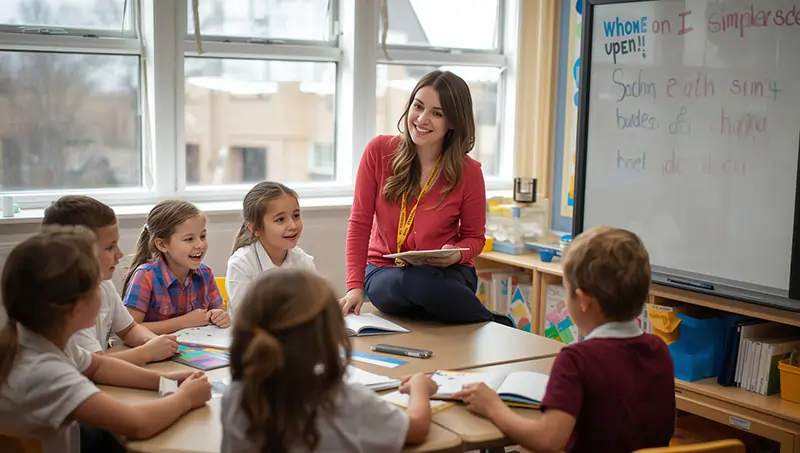Reading Tutors for Dyslexic Students: What to Expect

Understanding Dyslexia
Dyslexia is a common learning difficulty that typically causes problems with reading, writing, and spelling. In some cases, people with dyslexia also have difficulty with their memory, which can impact math and organization skills.
Experts believe between 5 and 10 percent of people suffer from this language-based learning disability. Although the condition does not fade over time, there are teaching approaches and strategies that can be applied to help people manage the challenges that come with it.
Many individuals with dyslexia have difficulty with the following:
- Learning to talk, pronouncing longer words, rhyming, etc.
- Learning the alphabet, days of the week, colours, shapes, and numbers.
- Learning letter names and sounds.
- Learning to read and write.
- Learning to identify syllables and speech sounds.
- Reading and spelling at grade level.
- Learning a foreign language.
Personalized Learning Plans
Personalized learning plans are meant to build an individualized teaching environment focused on understanding a student’s strengths and weaknesses. In order to meet the student’s needs these lesson plans usually include:
- The curriculum
- Student grouping
- Quality of teachers
- Goals
- Data tracking
Designing such plans for people with dyslexia requires addressing their individual phonological weaknesses. This involves any issues that impact reading, speaking, writing, spelling, and math. Ultimately, the goal of a personalized learning plan should be reading fluency.
However, teachers must first realize that for a dyslexic person, learning to read means first understanding that spoken words can be pulled apart into the different elements of speech and that each letter in a written word represents a sound.
An effective plan should have:
- Evidence-based approaches
- Tailored lessons for each child’s unique needs
- Trained tutors and/or teachers
- A firm grasp of language deficits
- Multi-sensory techniques that engage multiple senses simultaneously
- Flexibility
Multisensory Instructional Techniques
Visual Techniques
Visual aids can be used to help supplement auditory or tactile learning, which can involve both the reading of text, as well as visual arts. Some examples are:
- Painting
- Posters
- Video
- Creative visual design elements
- Visual map linking
- Representing musical notes on paper
Auditory Techniques
Students with dyslexia may benefit from the option to “read with their ears” by using audiobooks and text-to-speech applications. Effective literacy does not just depend on reading text—with practice, listening to different materials can be as effective. Examples of auditory learning include:
- Music
- Singing
- Rhymes
- Audio tones
- Lyrics
- Clapping
- Dialogue
Tactile Techniques
Tactile learning involves anything related to touch. While there is some overlap with kinesthetic learning, tactile teaching techniques focus on engaging fine motor skills. Examples of tactile techniques include the following.
- The use of:
– Letter tiles
– Coins
– Dominos
– Poker chips
– Sand
– Raised line paper
– Textures
– Finger painting - Small puzzles
- Modelling materials
Kinesthetic Techniques
Kinesthetic learning techniques rely on a combination of both fine motor skills and gross motor skills. This style of learning focuses on allowing students to learn through motion and physical actions.
Utilizing Assistive Technologies
Assistive technology is defined as any item, equipment, or system that is used to increase, maintain, or improve the functional capabilities of people with disabilities.
Text-to-Speech
Text-to-speech technology makes it possible for text on a screen to be read aloud by the program to the individual in an environment that is both safe and comfortable. Headphones can be used in public settings. This technology also helps with word prediction and dictation, which can provide additional help when challenges with spelling and/or reading aloud occur.
Voice Notes
One symptom of dyslexia is memory issues. Voice recordings and notes can help mitigate this problem by simplifying note-taking. When a student can record their thoughts right away, it eliminates unnecessary frustration, confusion, and rushing before they forget the information.
Note-Taking Software
This technology involves a wide range of software tools, including:
- Digitally drawing notes.
- Complete storage system for all digital documents.
- Cloud-based storage systems.
These different tools allow students with dyslexia to:
- Reduce the likelihood of late submissions or re-starting assignments due to mislaid papers.
- Demonstrate their creative processes better.
- Improve group project dynamics.
Progress Monitoring and Assessment
Prior to working with a reading tutor, students should expect to complete a screening test that will help identify their current needs. These tools are designed to determine the type of intervention required for the student to benefit from the lessons.
These tools may include the following:
- Parent interview (accompanied by a dyslexia checklist)
- Student screening process
- Phonemic awareness
- Phonics knowledge
- Sight reading (both real and nonsense words)
- Graded word lists
- Grade-level passage reading and fluency
- Reading intervention pre/post-tests to determine the starting point
Typically, these types of screenings take up to an hour to complete. They are done before the initial tutoring session begins and cost approximately the same standard rate.
Once the assessment is finished and the student starts the tutoring sessions, they will be continuously tracked and monitored to ensure the lessons align with their current needs. A regular progress-monitoring process includes:
- A post-test and review administered at the end of each level of the program
- Re-assessment of phonics knowledge
- Determination of the overall reading level and progress through analysis of the following:
– QRI-Graded Word Lists: Check accuracy, ability to read words in isolation, and estimate grade-level reading ability
– QRI-Graded Passages: Oral reading fluency and accuracy comprehension
As the student moves through the various stages of tutoring, post-tests will be administered to ensure they remain on par with the expectations.
Effective Communication and Collaboration
One of the keys to success in a classroom is effective collaboration between students—both those with and without dyslexia. Some ways to cultivate this type of environment are as follows:
- Concentrate on developing good relationships in the classroom.
- Use activities that focus on building understanding through the sharing of ideas.
- Integrate collaborative learning activities.
- Consider implementing the think-pair-share activity to help learners share ideas and allow for differentiated thinking time.
What to Expect When You Work With a Tutor
Tutors can help students with dyslexia develop the necessary skills and tools for improving their reading, writing, and memory. Through the application of multisensory learning and structured language approaches, tutors use various instructional models to create the most effective learning space possible for their students.

